Today, by request, I’m addressing those who have children and, therefore, need to know how to furnish a kids’ room…
Designing a space for children and/or teenagers requires special attention: you need to create an environment that is functional, safe, and comfortable but also capable of evolving with them over time.
At each stage of a child’s or teenager’s development, there are specific needs that you should consider when furnishing their room.
– THINK AHEAD
To avoid completely redoing the room every so often, consider purchasing some elements from the beginning with their future needs in mind.
For example, the wardrobe—while there are many delightful baby and children’s furniture options, after a few years, you’ll have to replace them.
The changing table, which is essential in the beginning, could actually be a beautiful dresser with just the changing pad on top.
The changing pad may disappear, but the dresser will remain.
To create a child’s room atmosphere that can easily transition into a teenager’s space, use colors, textiles, and decorations.
These elements have a less significant financial impact when they need to be updated.
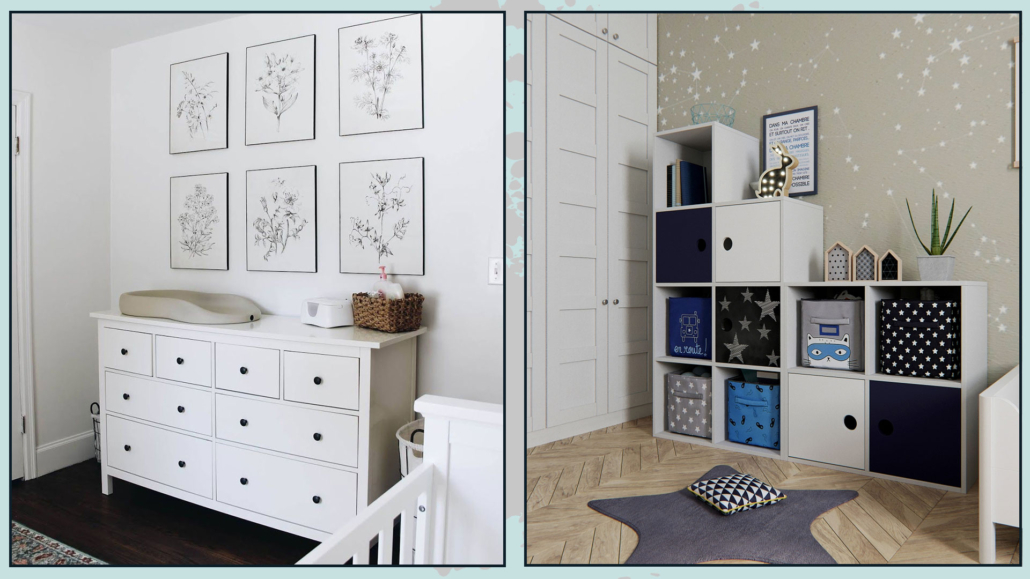
(credits: stylefurnituremalta.com; Dasha Dmitrieva)
– START WITH THE BIG ITEMS
It might sound trivial to you, but the risk is not achieving a functional room otherwise: bed, wardrobe, and desk are the three essentials in a kids’ room, and everything else follows from there.
Of course, the desk will come later, and the bed will need to be replaced initially with a crib, but you should have a clear idea of how and where to place these three items.
Once you’ve established the optimal placement for these three items, you can decide whether to add more, like a bookshelf, a pouf, or a chair…
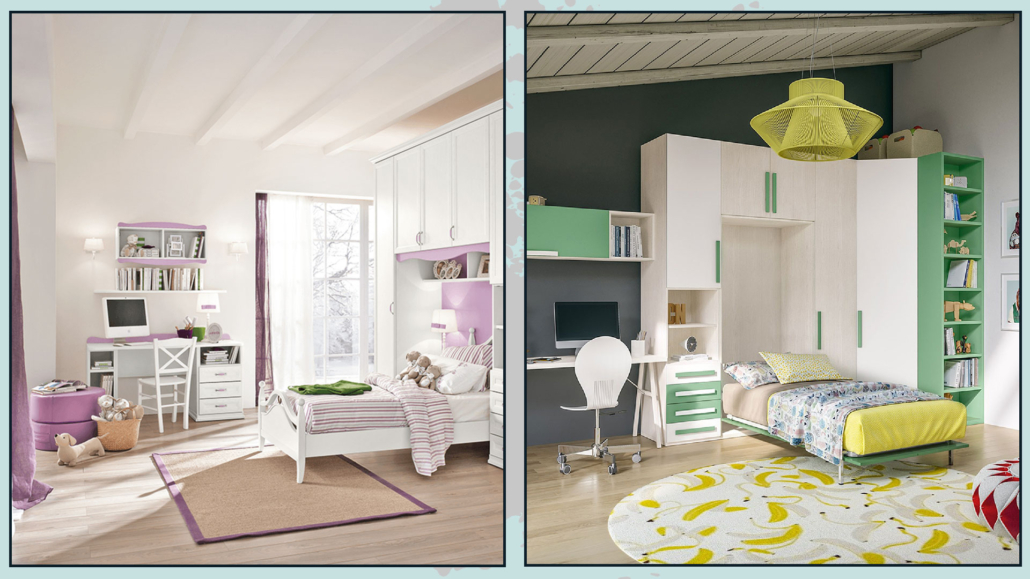
(credits: stylefurnituremalta.com; addamoebel.de)
– DIVIDE INTO ZONES
There are 4 zones to consider: sleep, play, study, and storage.
Kids tend to use everything as a play area, so if you don’t visually separate the zones, the risk is that the entire room becomes chaotic.
Bookshelves and storage should be placed near the desk and ideally away from the bed.
In smaller rooms where physical separation into zones is challenging, you’ll need to utilize the walls and multifunctional or fold-away furniture.
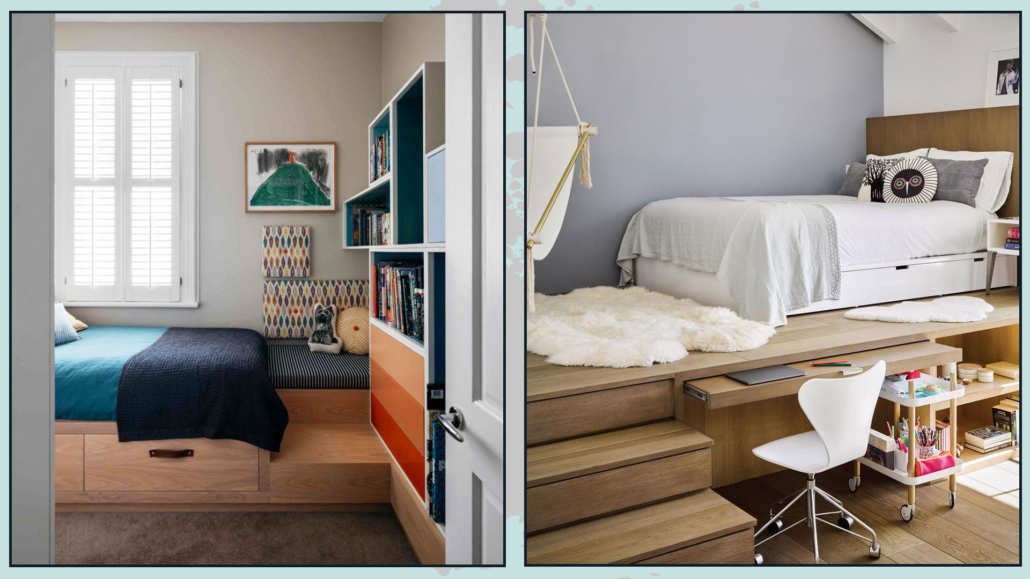
(credits: arentpyke.com; sneakerschampion.top)
In previous articles, I’ve often mentioned that furniture doesn’t need to be against the walls, but children’s and teenagers’ rooms are the exception.
It’s a great idea to leave them plenty of free space.
– INCORPORATE THEIR PASSIONS
Encourage your children to pursue hobbies and passions and use them to decorate their rooms.
Of course, avoid creating a room entirely based on a single theme because if their interests change, you’d have to redo everything. However, having a wall or a dedicated corner for that specific hobby or passion can be a unique addition.
The room will reflect your child’s personality and make them feel frankly represented.
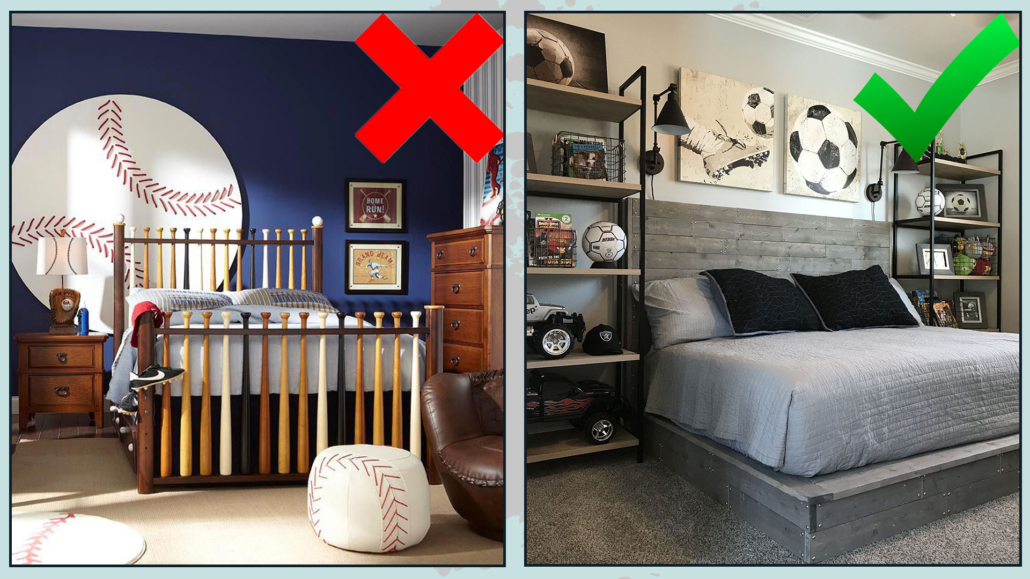
(credits: Franklin Pérez; Capturing Joy with Kristen Duke)
– DON’T OVERDO IT WITH COLORS
Rooms with walls, furniture, and accessories in overly bright colors are unsuitable.
Too much can be overwhelming, and there’s a risk that they may come to dislike a color as they grow up because they are sick of being surrounded by it!
So, it’s GOOD to have color, but perhaps in softer tones on walls and large furniture, and then brighter in accessories and decorations!
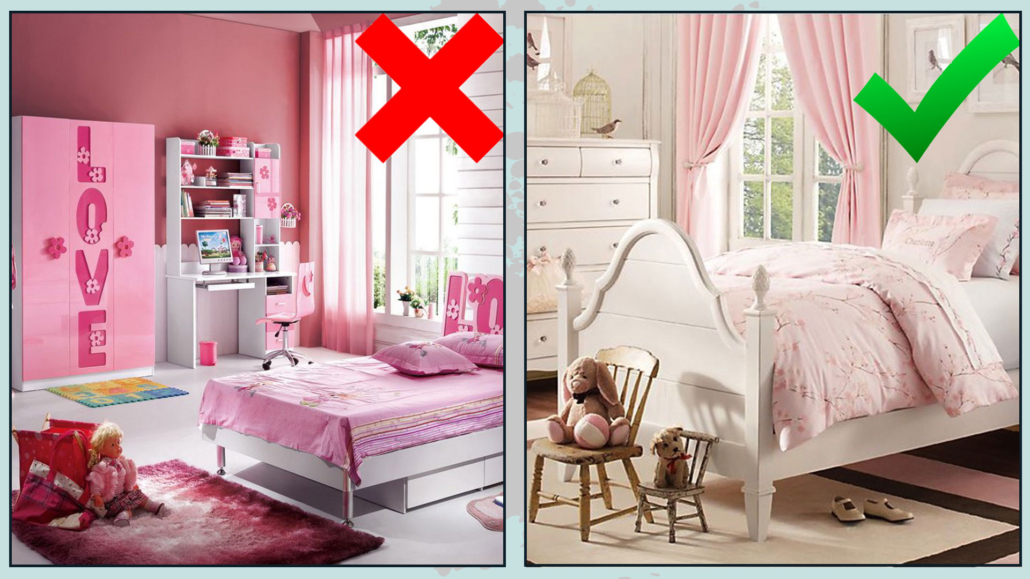
(credits: stylesatlife.com; vivense.com)
– COLORED WALLS
I mentioned not to overdo the color earlier, but that doesn’t mean keeping all the walls white!
That would be a waste and a bit impersonal!
It’s acceptable ONLY if there are many colorful furnishings and decorations.
However, as mentioned before, I advise against this.
It’s better to use softer colors even for the furniture!
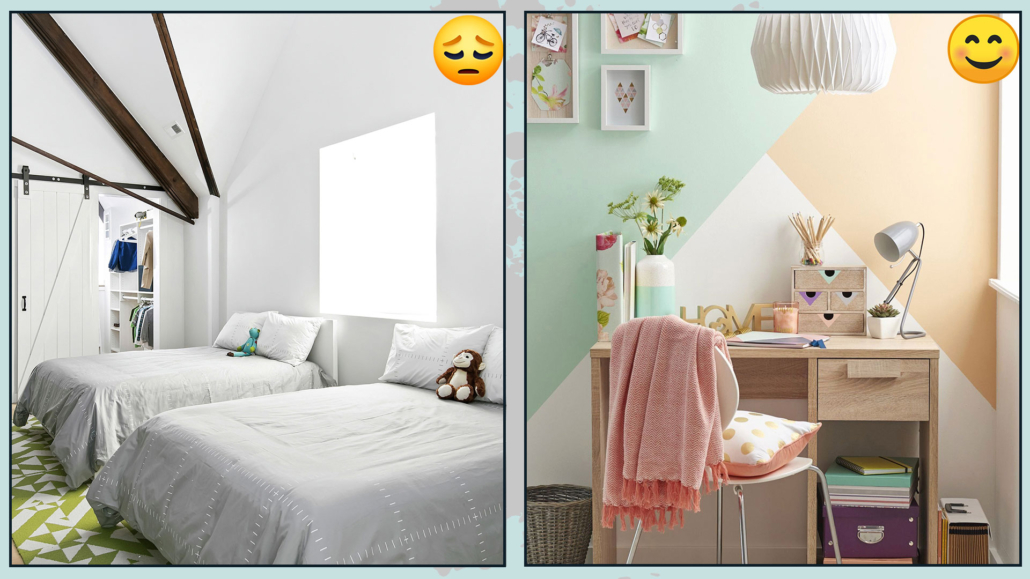
(credits: repubblica.it; ruangdekorasi.com)
You can also use wallpaper, looking for one with colors and patterns that help create the atmosphere you want for the room.
You can even do something unusual by putting wallpaper on the ceiling instead of the walls!
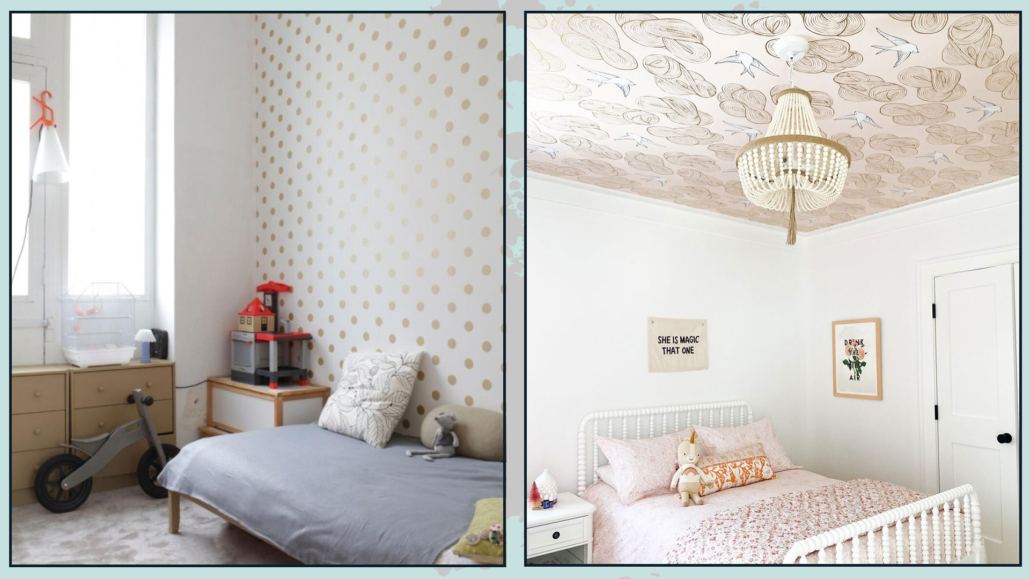
(credits: Cristina Peralta; purejoyhome.com)
Of course, if your child is already older, you can share with them what feelings they want to experience in their room and what represents them the most.
But since the tastes of children and teenagers change quickly, be careful not to overdo the patterns, or you’ll find yourself redoing the walls frequently!
– CHOOSE MATERIALS WISELY
For furniture you plan to use for a longer time, such as the wardrobe or the bed, it’s important to choose durable materials.
Of course, avoid fragile materials, especially when they are younger!
When I talk about materials, I also mean the floors because, believe me, they’ll be on the floor quite often, especially when they are babies, but even after that.
Avoid marble or overly smooth surfaces: they can be slippery besides being cold!
Wood would be ideal because it’s a warm material. But if you prefer tiles, remember to put on a nice rug!
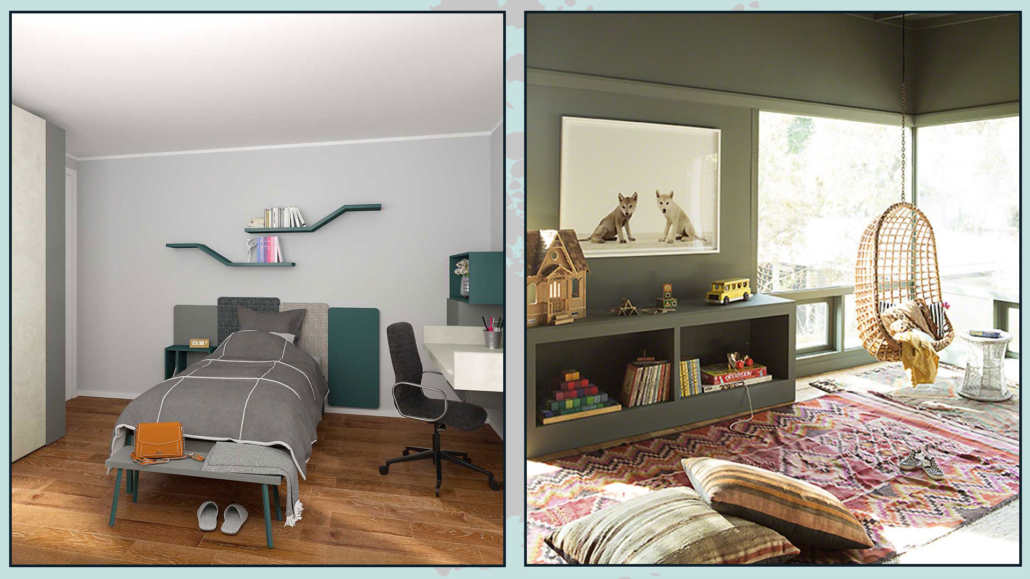
(credits: diotti.com; brandanidecore.com)
But even for the rug, BE CAREFUL that they are resistant and easy to clean!
– CURTAINS
Even in children’s and teenagers’ rooms, light and privacy control are essential, so curtains are necessary!
Moreover, when kids are younger, it’s essential to darken the room well so they can rest better.
For this reason, you can use double curtains: a light, semi-transparent drape and a darkening, colorful one.
The light curtain can be in drapery style for a more classic and romantic room or in a panel (or glass panel) for a more modern and contemporary one (here I talk about how to choose curtains).
The darkening colorful curtain should be chosen to match the room’s colors and mood, of course.
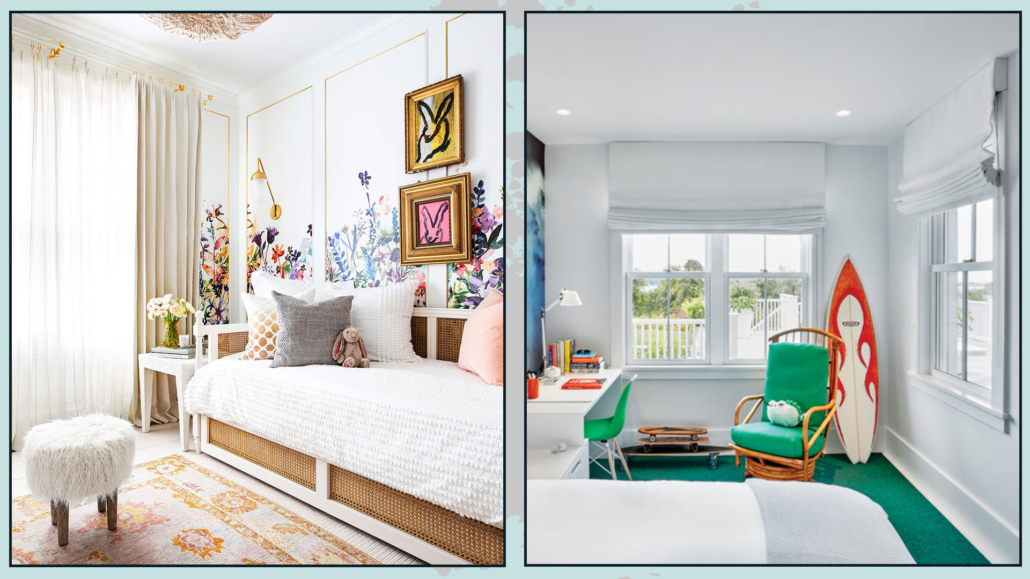
(credits: mydomaine.com; oceanhomemag.com)
– LIGHT IT UP PROPERLY
We know lighting is super important everywhere, and it’s no different in a children’s or teenagers’ room.
One should plan for general room lighting and specific lighting for each activity:
– a floor lamp for playtime;
– one desk lamp for the study area (which should be positioned to make the most of natural light);
– a bedside lamp.
Instead of the classic table lamps that kids might accidentally knock over, you can consider using wall-mounted lights!
There are various types available, and they can add a lively touch to the room!
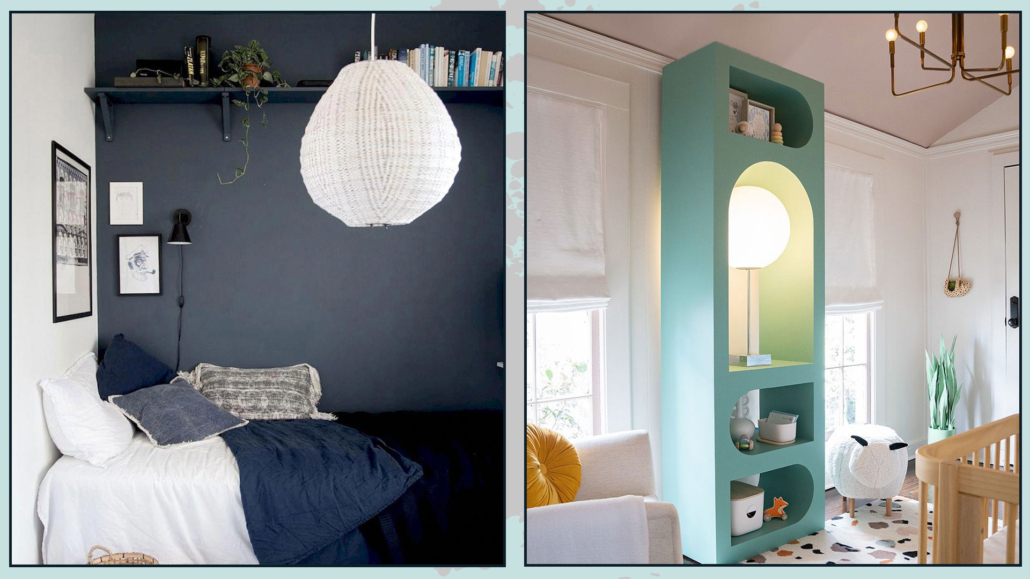
(credits: sigmamasterpiece.com; stylefurnituremalta.com)
– SEPARATE FROM THE REST OF THE HOUSE
I’ve always said that there should be a common theme in every room in the house, such as color or style, but the kids’ room can be an exception!
The room is theirs and should represent them.
So, don’t impose your taste or style on them!
At the same time, you can’t accommodate every single request they have, as mentioned earlier, their ideas change quickly, and you’d find yourself constantly redecorating.
So, compromise on their requests for colors and major furnishings and let them get creative with minor elements like textiles.
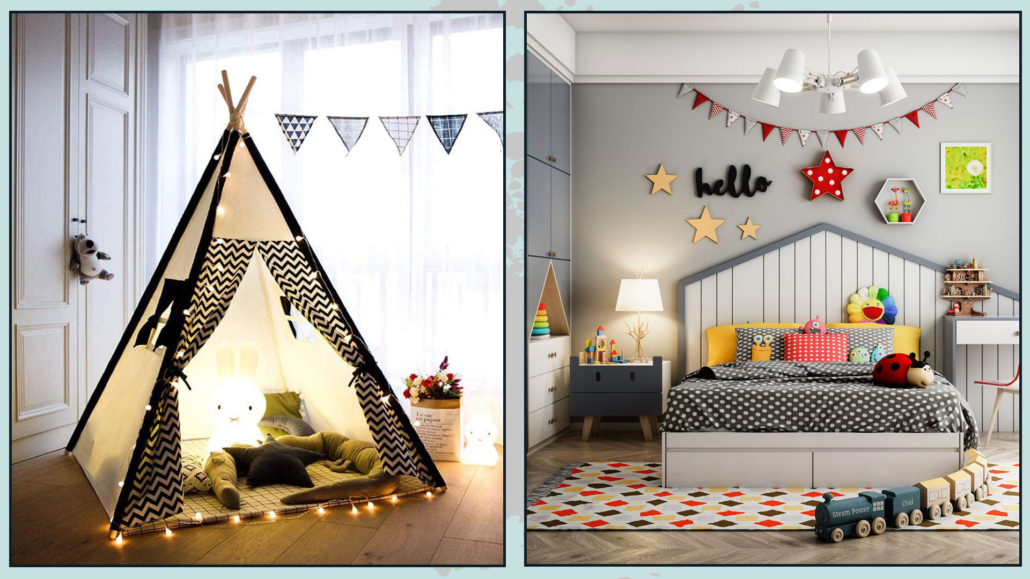
(credits: amazon.com; houseandhome.com)
I hope you found this article helpful and enjoyable. If you did, please let me know in the comments!
Feel free to share it with anyone you think might be interested; I would be honored, and it will help me get noticed.
If you feel that your home or any part of it doesn’t reflect you enough, don’t wait any longer and book your consultancy!
This post is also available in: Italian

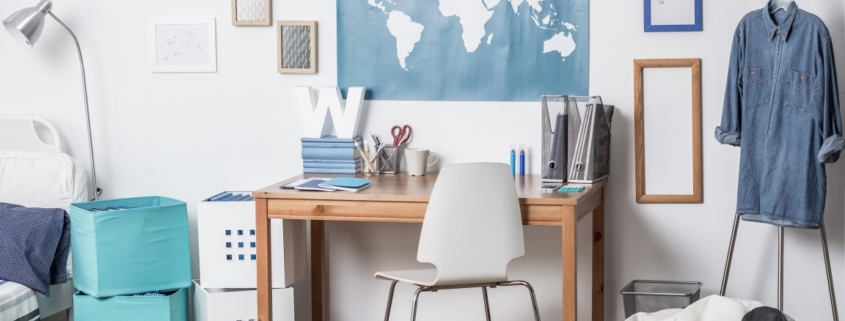
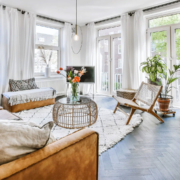

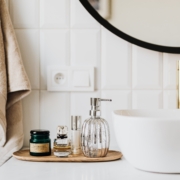
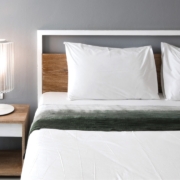

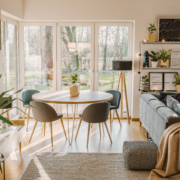


Leave a Reply
Want to join the discussion?Feel free to contribute!